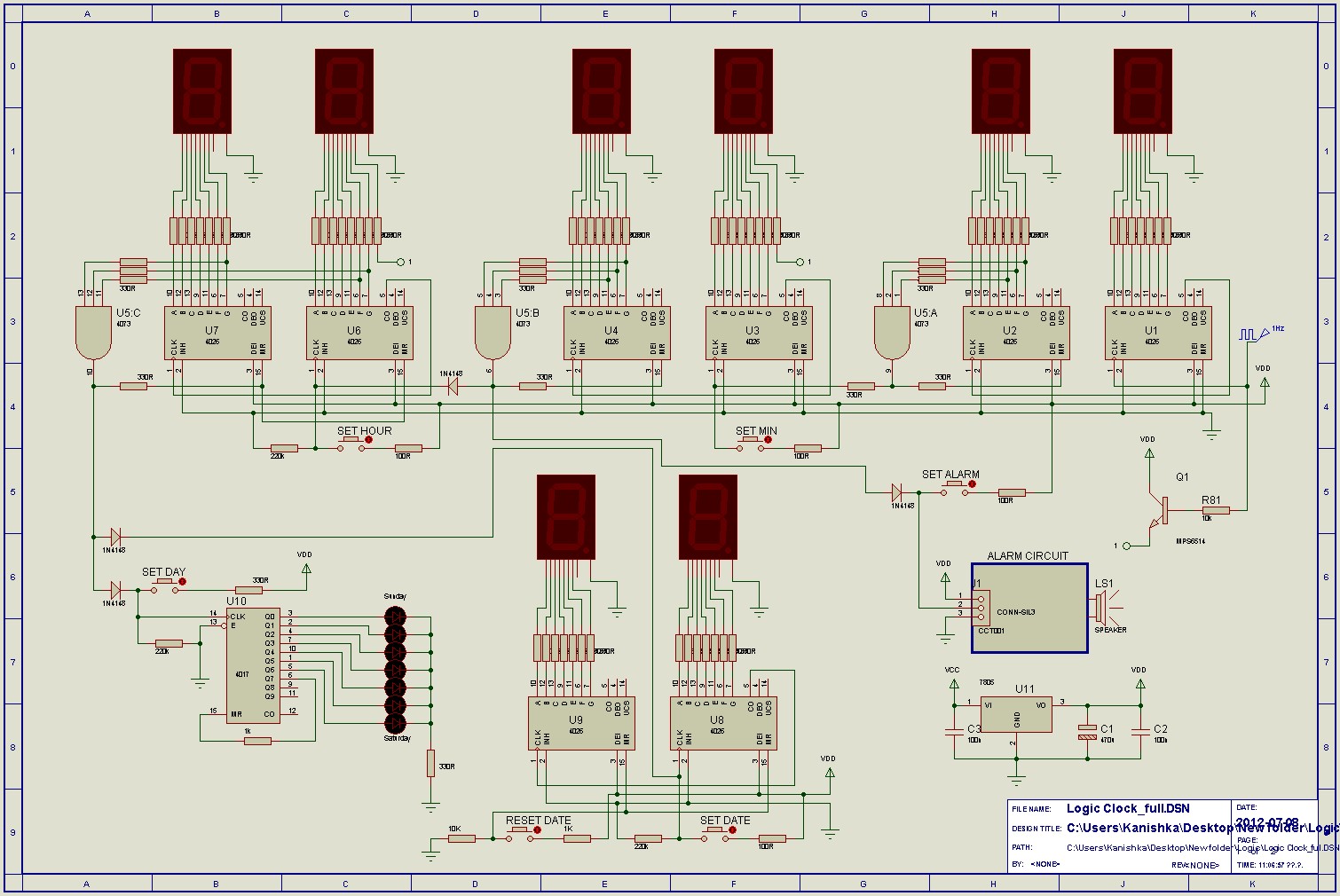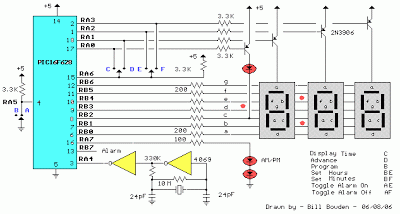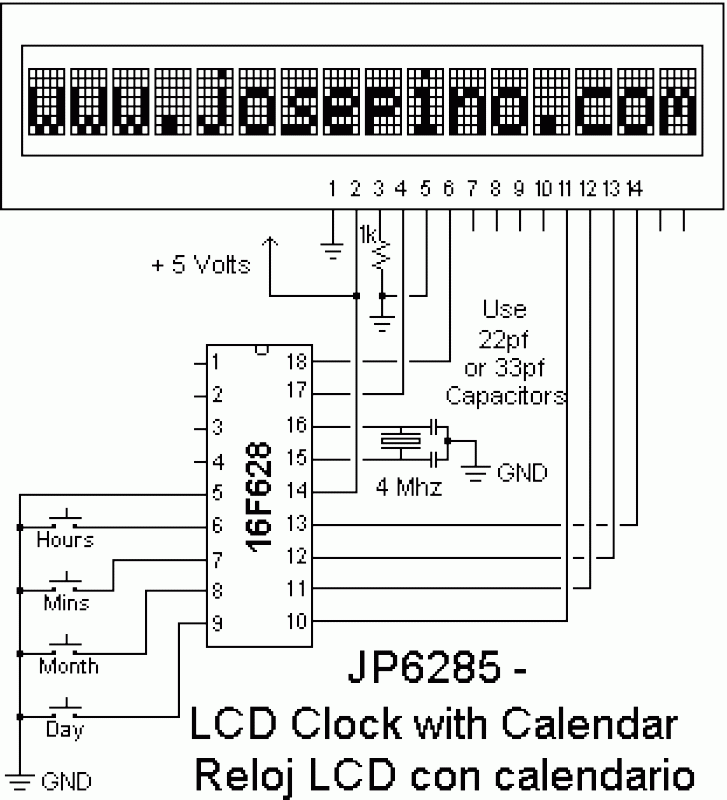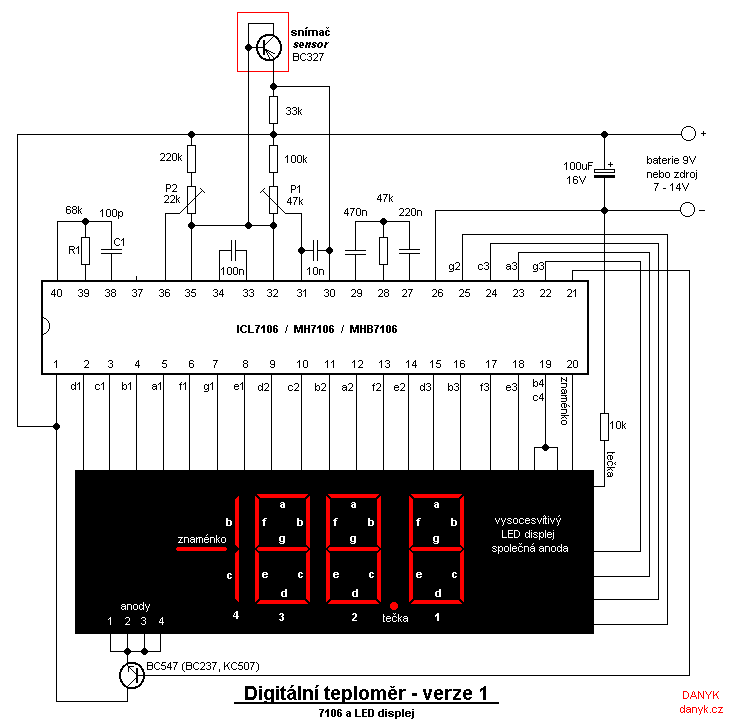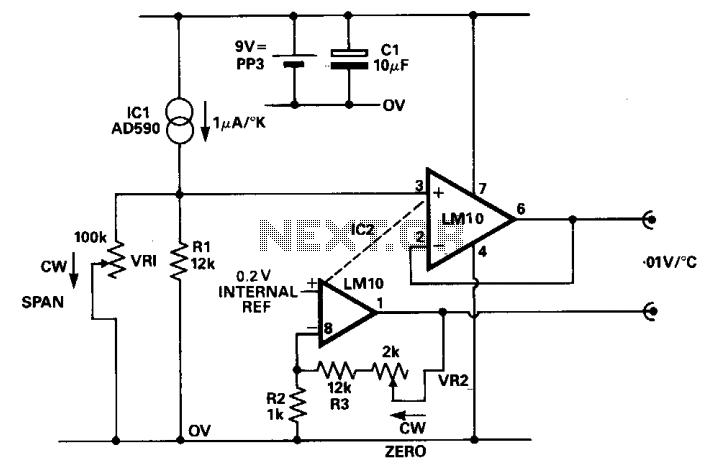
digital clock and temperature block
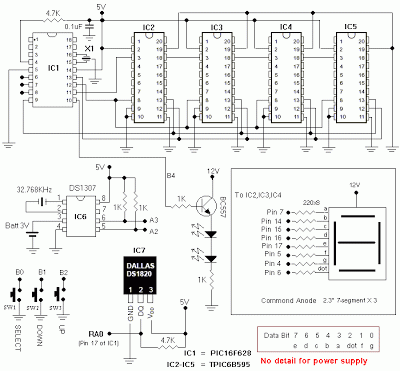
The diagram illustrates a block diagram for an agenda alarm and agenda thermometer system. It includes one temperature sensor, a real-time clock (RTC), a microcontroller (PIC), an EEPROM, a 7-segment display, and a keyboard. The EEPROM is utilized to expand the input/output capabilities of the CPU, as the PIC16F826 microcontroller has only 13 I/O pins. This EEPROM is a device that features an 8-bit serial-in, parallel-out configuration, which feeds an 8-bit D-type accumulator register.
The system architecture comprises several key components that work in tandem to achieve the desired functionality of an agenda alarm and thermometer. The temperature sensor is responsible for measuring ambient temperature, providing real-time data to the microcontroller. The real-time clock (RTC) ensures accurate timekeeping, essential for the alarm functionality.
The PIC microcontroller, specifically the PIC16F826, acts as the central processing unit (CPU) of the system. It executes the programmed logic to monitor temperature readings, manage alarm settings, and interface with user inputs from the keyboard. Given its limited I/O capabilities, the integration of an EEPROM is crucial. This EEPROM allows for the storage of additional data and settings, enabling the microcontroller to handle more complex tasks and user preferences.
The 7-segment display serves as the user interface for visual feedback, showing temperature readings and alarm status. The keyboard allows users to set and modify alarm times and thresholds, providing an interactive element to the system.
In summary, this agenda alarm and thermometer system is designed with a focus on functionality and user interaction, utilizing a combination of sensors, microcontrollers, and display technologies to deliver a comprehensive solution for temperature monitoring and alarm management.The amount 1. is a block diagram for agenda alarm and agenda thermometer. It consists of 1 temperature sensor, RTC, Microcontroller(PIC), about-face annals, 7-segment and key board. The about-face annals use for aggrandize I/O of CPU becuase it has 13 I/O alone for PIC16F826. This about-face annals is a accessory contains an 8-bit serial-in, parallel -out about-face annals that feeds an 8-bit D-type accumulator register. 🔗 External reference
The system architecture comprises several key components that work in tandem to achieve the desired functionality of an agenda alarm and thermometer. The temperature sensor is responsible for measuring ambient temperature, providing real-time data to the microcontroller. The real-time clock (RTC) ensures accurate timekeeping, essential for the alarm functionality.
The PIC microcontroller, specifically the PIC16F826, acts as the central processing unit (CPU) of the system. It executes the programmed logic to monitor temperature readings, manage alarm settings, and interface with user inputs from the keyboard. Given its limited I/O capabilities, the integration of an EEPROM is crucial. This EEPROM allows for the storage of additional data and settings, enabling the microcontroller to handle more complex tasks and user preferences.
The 7-segment display serves as the user interface for visual feedback, showing temperature readings and alarm status. The keyboard allows users to set and modify alarm times and thresholds, providing an interactive element to the system.
In summary, this agenda alarm and thermometer system is designed with a focus on functionality and user interaction, utilizing a combination of sensors, microcontrollers, and display technologies to deliver a comprehensive solution for temperature monitoring and alarm management.The amount 1. is a block diagram for agenda alarm and agenda thermometer. It consists of 1 temperature sensor, RTC, Microcontroller(PIC), about-face annals, 7-segment and key board. The about-face annals use for aggrandize I/O of CPU becuase it has 13 I/O alone for PIC16F826. This about-face annals is a accessory contains an 8-bit serial-in, parallel -out about-face annals that feeds an 8-bit D-type accumulator register. 🔗 External reference
